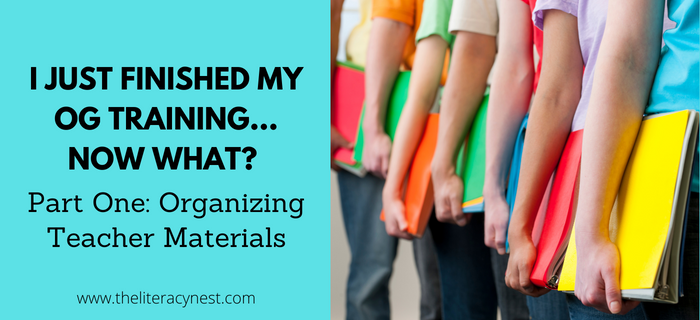Why Your Orton-Gillingham Students Should Be Doing the Work—Not You
Want to make a power move?! In an Orton-Gillingham lesson, one of the most powerful shifts you can make as a teacher is allowing students to do the cognitive work. That’s right, the student actually does the work! Yes, it may seem faster or more efficient to jump in and help. However, when teachers do the thinking, tapping, spelling, or decoding for Orton-Gillingham students, we rob them of the opportunity to build the very skills we’re trying to teach. Luckily, teachers can still support Orton-Gillingham students while they take ownership of their learning.
Why Students Should Be Doing the Work
1. Active Learning Builds Neural Pathways
Reading doesn’t just happen. It requires the brain to build and strengthen connections through repetition, effort, and multisensory engagement. If a student isn’t saying, writing, tapping, or blending, those connections won’t form.
2. Multisensory = Multimodal Participation
Orton-Gillingham students learn by simultaneously seeing, saying, hearing, and touching. If teachers do all of the talking or modeling, the student’s brain isn’t fully engaged.
3. Diagnostic and Prescriptive Teaching Depends on Observation
Teachers are constantly restructuring or adjusting the lesson based on the students’ needs. However, it is hard to adjust instruction if you can’t see what the student really knows. Giving students the space and time to show their work, whether right or wrong, can help give you insight. This insight allows you to know what needs reteaching, reviewing, or reinforcing.
4. You’re Building Independence, Not Dependence
Orton-Gillingham students are resilient. OG lessons set them up for success. However, if students are always waiting for the teachers to rescue or prompt them, they won’t internalize the skills. Empowering students to try, fail, and try again builds confidence, ownership, and long-term success.
How to Shift the Work to Your Students
1. Establish Clear Routines
Predictable, student-centered routines give kids structure. From warm-ups to dictation, Orton-Gillingham students should always be the ones:
– Tapping out sounds
– Blending and reading aloud
– Marking and labeling words
– Explaining rules back to you
Consistency reinforces habits and reduces reliance on teacher prompting.
2. Explicitly Teach and Practice Strategies
Orton-Gillingham students may freeze or wait for help simply because they don’t know what to do next. Teach them how to:
– Use a keyword deck
– Tap and blend sounds
– Break a word into syllables
– Use a vowel chart or sound wall
Then give them lots of chances to practice these tools independently.
3. Allow Productive Struggle
Give wait time. Resist the urge to fill in the silence. Let them work through it. Learning often happens during the struggle, not after the answer is given.
Pro tip: Use non-verbal cues like pointing to the tapping hand or vowel chart instead of giving the answer aloud.
4. Ask Questions That Prompt Thinking
Instead of telling, try asking:
– “What do you know about this pattern?”
– “What sounds do you hear?”
– “Can you try another strategy?”
These questions shift the mental work back to the student.
5. Use Retrieval and Repetition—The Student’s, Not Yours
Have Orton-Gillingham students:
– Repeat rules in their own words
– Teach back what they’ve learned
– Practice multiple examples aloud
This type of retrieval builds memory far better than teacher repetition.
6. Give Students Tools to Be Independent
Arm them with:
– Mini anchor charts
– Keyword cards
– Syllable bookmarks
– Sound walls
And teach them how to use those tools without waiting for your instruction.
Create Independent Orton-Gillingham Students
One fantastic way to help students work independently is by using decodable reading passages. Thankfully, there are no-prep passages you can use that follow a systematic phonics progression. The Color Clues Decodable Reading Passages with Comprehension Questions give students a fun, hands-on way to build decoding, fluency, and comprehension skills, without constant teacher support.
In this bundle, Orton-Gillingham students become reading detectives by using red, blue, or yellow crayons or highlighters to find their answers right in the text. Then, they write those answers in the spaces provided. These passages are perfect for building student confidence and independence. Likewise, they work well in intervention settings or when you need meaningful work that students can do on their own. With 44 fully decodable passages included in this bundle, it’s an ideal way to support Science of Reading-aligned instruction.
Want to learn even more about this approach? Watch this short video: Why Your OG Students Should Be Doing the Work
Take the Next Step
Looking for structured support and monthly tools to support your Orton-Gillingham students? Join the Building Readers for Life (BRFL) Academy. You’ll get instant access to monthly decodable tools, video trainings, and more—for just $1 in your first 30 days! Learn more here or go straight to the checkout page.
You might also enjoy reading this blog post on 7 Techniques for Building Independence in OG Lessons.
Let Orton-Gillingham Students Work
Teachers are the guides in OG lessons, but Orton-Gillinham students should be the ones doing the heavy lifting. When kids are actively participating, they’re not just learning to read… they’re learning how to learn. So next time you’re tempted to step in and help, remember to hit pause and think:
If you’re doing the work, they’re not learning it.
And when you’re ready to support that shift, try the Color Clues Decodable Passages, or join the BRFL Academy to get everything you need to help your Orton-Gillingham students thrive.
Also, don’t forget to pin this blog to your favorite OG Pinterest board! You will be able to come back to these tips when you are ready to hop in the backseat and let students do the driving in their with their learning.





